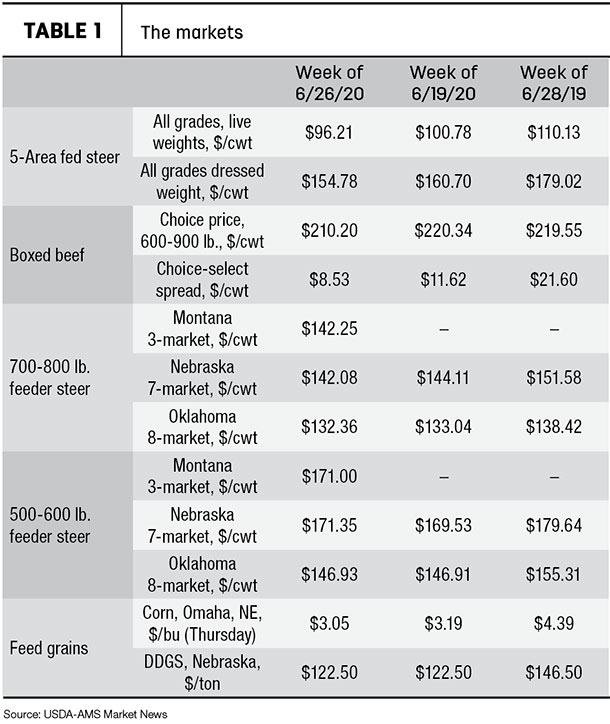Slaughter cow prices have been one of the few bright spots for cattle producers over the past few months. Slaughter cow prices in the Southern Plains averaged $57.84 per hundredweight over the past six weeks of available data, which is 19.5% above the same period in 2019. Generally, cull cow markets are most directly related with ground beef demand.
Cull cow slaughter comes from both beef and dairy cows. In 2019, the split for total federally inspected cow slaughter was about 50-50 between beef and dairy cows. But the seasonal patterns of beef and dairy cow slaughter are a little different. Dairy cow slaughter typically declines from the first of the year to a seasonal low in June and July. Beef cow slaughter varies too with production cycles and declines in the summer, but it is typically a little more consistent than dairy through the spring and summer months before peaking as the winter months approach.

A look at the processing changes during the worst months of plant labor disruptions shows that beef and dairy cow slaughter faced different reductions. The worst week for beef cow slaughter capacity compared to 2019 was in late April when beef cow slaughter was 19.5% below the same week a year ago. Total dairy cow slaughter didn't show the same level of reductions compared to a year ago. Dairy cow slaughter declined from week to week for most of the spring, but that occurred alongside the typical seasonal decline.
The number of beef cows processed increased through May and into June. For the first two weeks of June, beef cow slaughter was up 6.7% compared to the same two weeks a year ago. Similar to what occurred in calf and feeder cattle sales, at least some of this increase may likely be due to sales delays caused by producers' decisions to wait, or by auction slowdowns. The relatively strong prices combined with the low beef cow slaughter in April provides rationale for the increase in beef cow slaughter in June.
For the year, beef cow slaughter is up about 2% while dairy cow slaughter is down 2%. Together, year-to-date total cow slaughter is about the same as compared to a year ago. Lower calf prices could drive increased beef cow culling later in the year. Dairy slaughter is near the seasonal low point, and milk prices have rebounded, which may likely prevent significant dairy cow culling. While the supply picture is becoming a little clearer, ground beef demand will continue be key for support of beef cow cull prices. ![]()
This originally appeared in the June 30, 2020, Livestock Marketing Information Center In the Cattle Markets newsletter.

-
Josh Maples
- Assistant Professor and Extension Economist
- Mississippi State University





